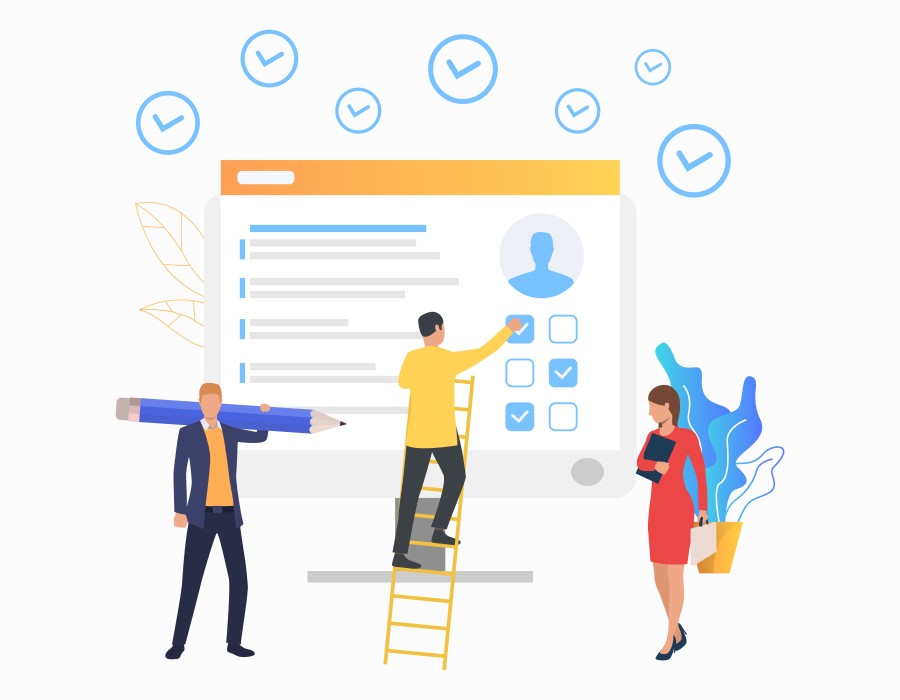Employee satisfaction is a cornerstone of organisational success in the modern business landscape. Happy employees are more productive and contribute positively to the company's overall culture and reputation. Companies are turning to Human Resource Management Systems (HRMS) as a powerful tool to cultivate a motivated and engaged workforce. This article will explore how HRMS-powered strategies can elevate employee satisfaction to new heights. By leveraging technology, streamlining processes, and enhancing communication, organisations can foster an environment where employees feel valued, empowered, and fulfilled.
Leveraging HRMS for Enhanced Employee Satisfaction
1. Centralized Employee Data Management
HRMS platforms centralise crucial employee information, from personal details to performance records. This accessibility streamlines administrative processes, reducing manual paperwork and ensuring accurate data management. With easy access to their information, employees feel empowered and valued, often including crucial documents like the performance appraisal letter, contributing to trust and transparency within the organisation.
2. Self-Service Portals for Autonomy
Empowerment is a crucial driver of employee satisfaction. HRMS platforms often feature self-service portals, allowing employees to manage their personal information, benefits, and leave requests. This autonomy fosters a sense of control over their work lives, leading to increased job satisfaction and reduced administrative burdens on HR personnel.
3. Streamlined Onboarding Processes
First impressions matter, and HRMS can ensure new hires have a smooth and efficient onboarding experience. From digital paperwork to training modules, HRMS accelerates the assimilation process, helping employees feel welcome and prepared from day one. A positive onboarding experience sets the tone for a fruitful employee journey.
4. Performance Management and Feedback
HRMS offers tools for comprehensive performance management, including goal-setting, regular check-ins, and feedback collection. These features facilitate open communication between employees and managers, enabling continuous growth and improvement. By recognising achievements and addressing challenges promptly, HRMS-powered performance management enhances job satisfaction.
5. Training and Development Opportunities
Employee growth and development are pivotal for job satisfaction. HRMS platforms track employees' skill sets and career aspirations, making identifying relevant training and development opportunities easier. Offering these growth paths boosts job satisfaction and ensures a more skilled and capable workforce.
6. Seamless Communication and Collaboration
Effective communication is the backbone of any organisation. HRMS often integrates communication tools that facilitate instant messaging, team collaboration, and project management. This connectivity enhances teamwork, breaks down silos, and fosters employees' sense of belonging and engagement.
7. Flexibility through Remote Work Management
In the wake of changing work dynamics, HRMS has become crucial for managing remote work. With features like virtual attendance tracking and remote project management, employees can maintain a healthy work-life balance, contributing to their overall job satisfaction.
Implementing HRMS-Powered Strategies: Best Practices
1. Assessing Organizational Needs
Before implementing an HRMS solution, conducting a thorough assessment of your organisation's needs is crucial. Identify pain points, areas of inefficiency, and the specific features that would benefit your workforce the most. This evaluation will guide you in selecting an HRMS system that aligns with your goals and addresses your unique challenges.
2. Customization for Maximum Impact
No two organisations are alike, and your HRMS solution should reflect that. Opt for a system that allows customisation to match your company's structure, processes, and terminology. Tailoring the approach ensures a seamless integration that resonates with your employees and facilitates user adoption.
3. Employee Training and Onboarding
Introducing new technology can be resisted if employees need to become more familiar with its functionalities. To ensure a smooth transition, invest in thorough training and onboarding. Walk employees through the HRMS platform's features, benefits, and how-tos. This proactive approach minimises confusion and maximises user engagement.
4. Change Management and Communication
Implementing HRMS-powered strategies entails change, and effective change management is crucial. Communicate the change's reasons, benefits, and steps involved. Address any concerns or misconceptions to gain employee buy-in and enthusiasm for the new system.
5. Data Security and Privacy Measures
As an HRMS system deals with sensitive employee information, data security and privacy should be paramount. Choose a system that adheres to industry standards for data protection. Implement robust encryption, access controls, and regular security audits to safeguard employee data and your organisation's reputation.
Benefits of Implementing HRMS for Employee Satisfaction
- Improved Efficiency: HRMS automates administrative tasks, freeing up HR personnel to focus on more strategic initiatives that directly impact employee satisfaction.
- Enhanced Transparency: Employees can access their information, benefits, and leave status quickly, promoting transparency and trust within the organisation.
- Empowerment and Autonomy: Self-service features empower employees to manage their HR-related tasks, promoting ownership and autonomy.
- Streamlined Processes: HRMS simplifies processes like onboarding, leave requests, and performance management, reducing friction in employee experiences.
- Personalised Development: HRMS facilitates personalised development plans by tracking skills and career aspirations, contributing to employee growth and job satisfaction.
- Effective Communication: Integrated communication tools foster collaboration, streamline communication, and create a cohesive work environment.
- Work-Life Balance: HRMS supports remote work management, enabling employees to achieve a healthy work-life balance and boosting job satisfaction.
Conclusion
In employee satisfaction, the integration of HRMS is a game-changer. By leveraging technology to streamline processes, enhance communication, and foster growth, organisations create an environment where employees feel valued, empowered, and motivated. The benefits extend beyond administrative efficiency; they manifest in higher engagement, improved job satisfaction, and a culture of continuous development. As businesses adapt to evolving workplace dynamics, HRMS-powered strategies offer a potent solution to elevate employee satisfaction to new heights.





Comments